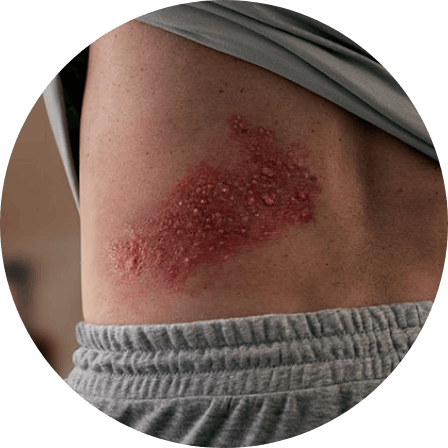
ABOUT
SHINGLES
WHAT IS SHINGLES?
Shingles, also known as herpes zoster, usually presents as a painful, blistering rash caused by reactivation of the varicella-zoster virus (the same virus that causes chickenpox).1,7
Shingles is most common in people 50 years and older, and those with a compromised immune system.1,2,7,8 While uncommon, it is possible to get shingles multiple times.9
A weakened immune system due to factors such as increasing age or immunocompromising conditions can increase your risk of infections including shingles.8,10-12 If you’re over 50 years old and have had chickenpox, the virus that causes shingles may be inside your body but lies dormant.11,23 Your immune system naturally weakens over time as you age, which can allow the usually inactive virus to reactivate and cause shingles – despite how healthy you may feel.10-12
ABOUT 1 IN 3 PEOPLE will get shingles in their lifetime, and the risk increases with age.1*,2,7
*US data. May not be representative of the New Zealand population.
WHO IS AT RISK OF
GETTING SHINGLES?
No matter how healthy you feel, your
immune system declines as you age,
and that puts you at an increased risk
for shingles – especially if you’re over
50 years old.7,10-12

SHINGLES SYMPTOMS1,2,4,25
Shingles typically produces a rash that can last 7-10 days, with complete healing within 2-4 weeks.1 The rash usually erupts on the left or right side of the body, or sometimes the face, along a nerve path. Most people who get shingles experience pain – described by many as aching, burning, stabbing or shock-like.1,2,4
Rash
BLISTER
EXTREME PAIN

Up to 30% of people with shingles may develop post-herpetic neuralgia (PHN).2,7 People with PHN can experience persistent nerve pain, which can last for months or years – even after the rash clears up. The risk of developing PHN increases as you get older.1-2,7
Other possible complications of shingles include scarring, vision loss if the eye is affected, some degree of weakness of the affected nerves and rarely, heart attack and stroke.1,7,13-15